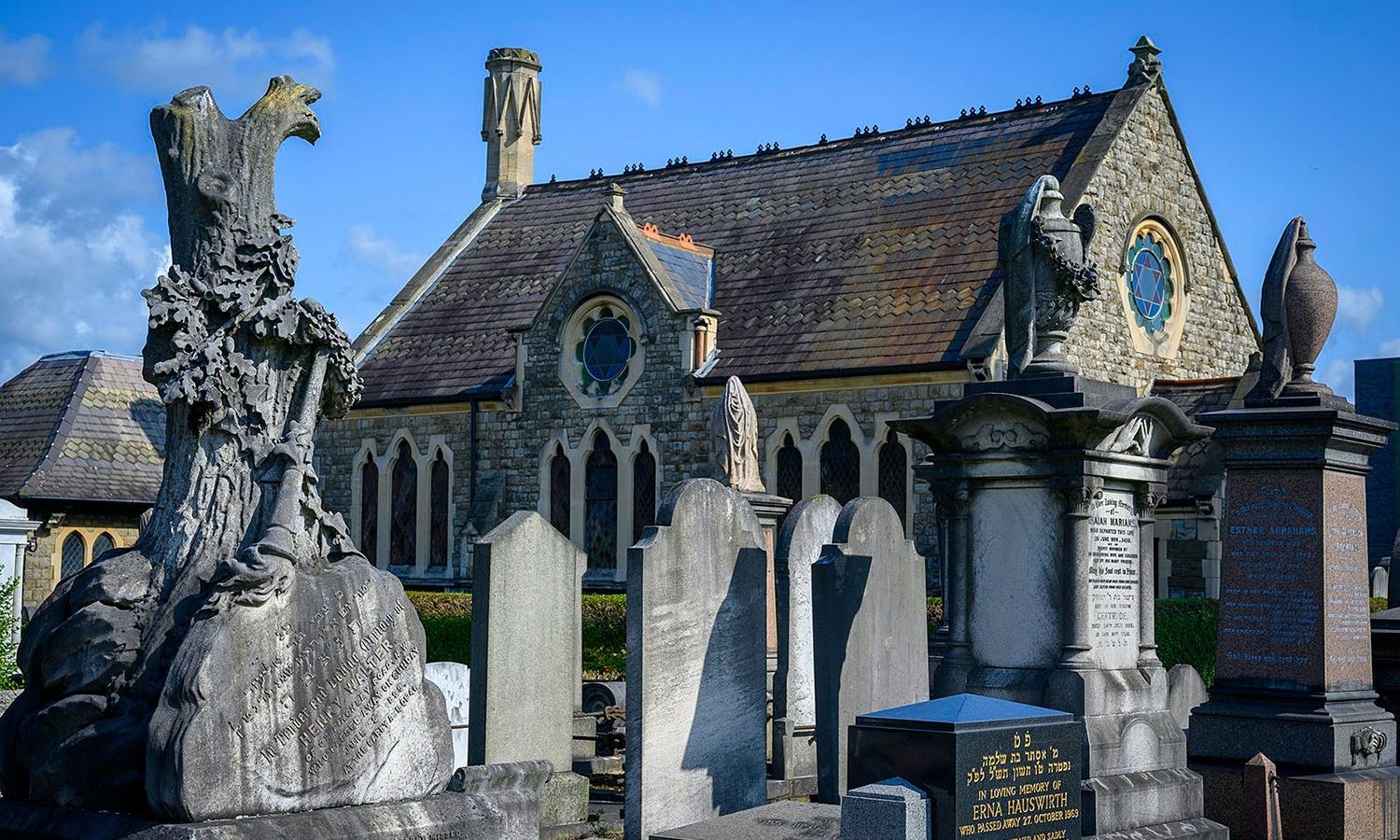Thanks to a new injection of funding, London has a new historic attraction that can be explored: the Willesden Jewish Cemetery, located in a quiet residential pocket on the northwestern section of the city.
Willesden Jewish Cemetery, however, is not new at all: it has a long and storied history spanning nearly 150 years. Opened in 1873, the burial ground has nearly 30,000 graves. It was set up in the park-like style of London’s Magnificent Seven, a nickname given to a group of Victorian-era cemeteries, such as the famous Highgate Cemetery, that have tranquil grounds for strolling and elaborate tombs and mausoleums adorned with intricate funerary motifs. But this is not a typical style for Jewish burial grounds.
For the first time, Willesden Jewish Cemetery is running guided walks of the grounds and has an exhibition about its history in the former cemetery administration offices, now called the House of Life. The funerary buildings have also been refurbished and outfitted with motion-sensor sound installations that explain Jewish burial traditions and invoke the atmosphere of prayer and remembrance.
This cemetery is the final resting place of many important names in history, including 23 members of the Rothschild family, fashion designer Kurt Geiger, painter Simeon Solomon, H. Samuel of jewelry fame, and DNA decoder Rosalind Franklin, who wasn’t credited with the discovery of the double helix structure until well after her death, which is why it isn’t mentioned on her gravestone.
It is open from 10 am to 1 pm Monday to Thursday and until 4 pm on Sunday. Entry and guided tours are free, but an £8 donation is suggested. The cemetery is also running virtual events online during the coronavirus pandemic.
